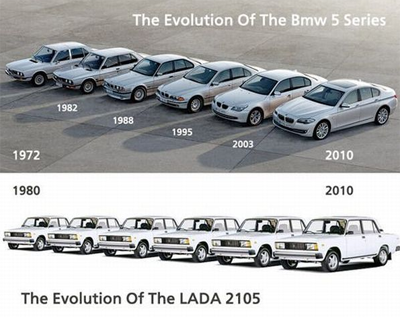A curious anomaly popped up the other day when it seemed that a handful of Peugeot 307's had been registered in January. Hang on though, wasn’t the 307 discontinued several years ago? Hasn’t it actually been replaced twice over already? Did someone find a dusty half-dozen down the back of a forgotten warehouse and decide to flog them off, cheap?
Sadly, no. There’s no Indiana Jones moment here. It turns out that there was simply an error in someone’s filing system somewhere and some 308's got written into a form as 307's. Simple mistake and unfortunately one which immediately banished all thoughts of relic barn finds.
It did get me thinking though that one of the best ways to get maximum bang for your buck when car buying, new or used, is to wait for a new model to come along, when manufacturers get all keen to get rid of the old ones that they still have in stock.
The run out model

The arrival of the run-out model is as predictable and regular as the tides, and it’s simply a case that as a shiny new car arrives on sale, car makers and car dealers are occasionally desperate to off-load any of the old ones they still have hanging around. So, in the case of a new car, you’re looking at significant discounts and usually special editions with extra standard equipment.
Back in the old days, that generally meant you could get a Fiesta with slightly jazzier wheel trims and maybe some nicer seats, but now you can get so much more and the run-out special is no longer limited to mainstream brands.
Take the Mercedes C-Class Edition C. Now, later this year there will be an all-new C-Class that’s set, says Mercedes, to redefine the standards for the sports saloon class and bring S-Class technology to a more affordable price bracket. All of which is brilliant, but when there’s a six month lag between the announcement of the new model’s existence and its actual, physical arrival in dealerships, what do you do to keep the sales of the outgoing version ticking along?
More for less
Simple, you load it up with extra toys and that’s just what Mercedes has done with the Edition C. It gets ritzy seat fabrics, a sporty AMG bodykit and even gorgeous shiny black alloy wheels, amongst other niceties. These extras, say Mercedes, would cost you around €4,500 if you were to buy them individually, but they’re fitted to the Edition C at no extra cost. Nice stuff, and the beauty of it is that while doubtless the new C-Class will be brilliant, there’s little or nothing wrong with the current car, so getting a bargain run-out won’t leave you feeling like you’ve bought last year’s smartphone.
At as slightly more affordable end of things, there’s an all-new Ford Focus coming very, very soon. In fact, Ford is due to reveal the car to the world’s press in just a few weeks, but sales won’t start until the end of this year at the earliest. That leaves a good nine months for the existing Focus to keep trudging along, and that means bargains for you and I.
Now, the Focus is a strong-seller and always will be, regardless of whether it’s on the way out or not, so Ford probably won’t be doing any equipment-laden specials until the very last minute, but there are still ways in which you can use the existence of the new model to your advantage. Simply put, you can use it as walk-away leverage. Why not try suggesting to your local dealer that, while you’re happy to buy today, you might put it off until the new model has arrived. See how fast a salesman desperate to close a deal will knock another bit off the price when you try that. For best effect, try it on the last day of the month…
More for your buck
The second effect of an incoming new model is on the second-hand car market. The arrival of a whizz-bang new model is clearly going to reduce interest in its predecessor, and the fact that (a) manufacturers will be discounting to offload their old stock and (b) many existing owners will be trading in for the new model, causing a glut of second-hand stock means that there can often be a dip, or at least a softening, of second-hand values for an outgoing model.
The trick is to keep an eye on the new car magazines and websites (such as our very own new car search engine on Irish Times Cars) and see what’s shiny new cars are coming down the pipe. Then keep an equally close eye on the prices for second-hand versions of the existing model. As the new car gets closer and closer, these should start to fall a little and if you wait until the next number-plate change after the arrival of the new one, you should be able to get good prices on two-to-three year old versions of its predecessor.
Even when you’re just generally shopping second hand, it’s worth keeping an eye out for run-out versions of popular cars simply because they will often have the extra equipment and packages fitted to make them more attractive when they were new purchases, but they’re not usually worth anything extra come resale time.
And if you really, really want the shiny new one? Well just wait a couple of years until the mid-life facelift is announced and then the cycle starts all over again…
Found the perfect run-out model you want? Make sure you get its background fully investigated by Motorcheck.ie